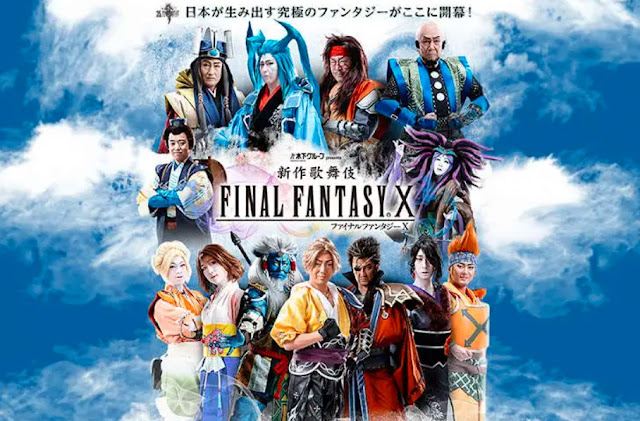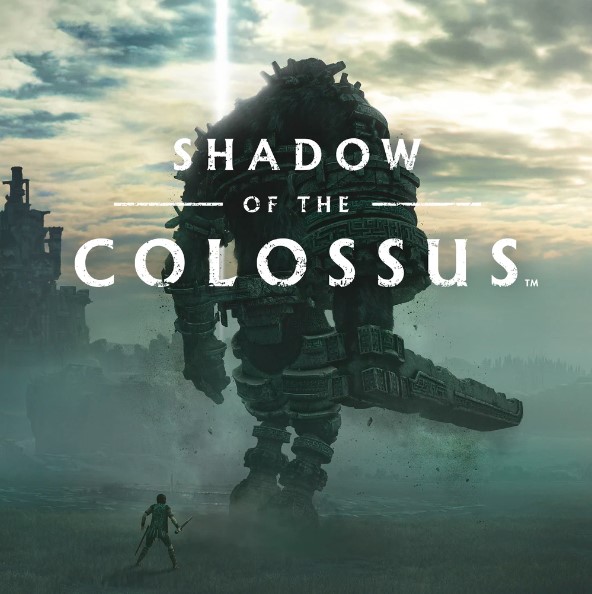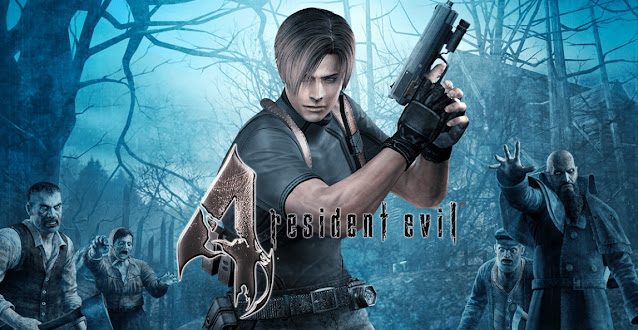The Golden Age of Gaming on the PlayStation 2
5 Best PS2 Games. The early 2000s marked a pivotal moment in the gaming industry, and at the forefront of this revolution stood the PlayStation 2. Launched in the year 2000, Sony's second-generation console wasn't just a gaming device; it was a cultural phenomenon that redefined how we interacted with virtual worlds. As we delve into the era affectionately known as the "Golden Age of Gaming," it's impossible to ignore the profound impact that the PlayStation 2 had on shaping the landscape of interactive entertainment.
During this era, the gaming industry witnessed an unprecedented surge in technological advancements and creative breakthroughs. The PlayStation 2 emerged as the catalyst for this evolution, boasting cutting-edge graphics, a vast library of diverse games, and a community of players eager to explore uncharted digital territories. It wasn't just a piece of hardware; it was an enabler of dreams and a conduit for the imagination. Best PS2 Games.
The Golden Age of Gaming on the PlayStation 2 wasn't defined solely by technological prowess; it was a convergence of visionary game developers, compelling narratives, and the sheer joy of exploration. The console became a melting pot of genres, from the adrenaline-fueled action of "Grand Theft Auto: Vice City" to the strategic brilliance of "Metal Gear Solid 3: Snake Eater." Each title brought something unique to the table, contributing to an era of gaming that would be remembered as a formative chapter in the industry's history.
1. Grand Theft Auto: Vice City - A Virtual Playground of Crime and Intrigue
In the sprawling digital expanse of "Grand Theft Auto: Vice City," players found themselves immersed in a neon-soaked, 1980s-inspired playground of crime and intrigue. Released in 2002 by Rockstar Games, this installment in the GTA series wasn't just a game; it was an interactive homage to the era of excess, blending a gripping narrative with an open-world environment that was as captivating as it was dangerous.
Set against the backdrop of Vice City, a fictional metropolis reminiscent of Miami, players assumed the role of Tommy Vercetti, a former mobster aiming to rise to the top of the criminal underworld. The narrative unfolded with cinematic flair, complete with betrayals, power struggles, and a cast of characters that became instant classics in the gaming world.
What set "Vice City" apart was its audacious embrace of the '80s aesthetic. From the pulsating soundtrack featuring iconic hits of the era to the vivid pastel color palette dominating the skyline, the game became a time machine, transporting players to a decadent era of flashy sports cars, pastel suits, and neon-lit nightclubs. The city itself felt alive, teeming with pedestrians and traffic, creating an immersive environment that encouraged exploration.
The open-world design of "Vice City" was groundbreaking at the time, offering players unprecedented freedom to chart their own criminal odyssey. Want to hijack a sports car and engage in a high-speed chase through the city streets? Go for it. Feel like causing chaos with an arsenal of weapons? The choice was yours. The sheer scope of activities, from legitimate missions to sandbox-style mayhem, made "Vice City" a virtual playground where every street corner held the promise of adventure.
But it wasn't just about the mayhem. The game's narrative intricacies and character development added layers of depth that elevated it beyond a mere crime simulator. Tommy Vercetti's journey from a hired thug to a criminal mastermind was a rollercoaster of emotions, punctuated by memorable encounters and unexpected twists.
2. Final Fantasy X - A Fantasy Epic with Unforgettable Characters
In the vast realm of gaming, few titles have achieved the level of storytelling and emotional resonance as "Final Fantasy X." Released by Square Enix in 2001, this installment in the legendary Final Fantasy series stands as a testament to the power of narrative-driven gameplay, enchanting players with its immersive world, captivating characters, and a storyline that transcends the boundaries of traditional gaming.
Step into the fantastical world of Spira, a land plagued by the destructive force known as Sin. At the heart of the narrative is Tidus, a skilled blitzball player who finds himself transported to Spira, and Yuna, a summoner on a perilous journey to defeat Sin and bring peace to the world. The game's narrative unfolds with cinematic precision, weaving a tale of love, sacrifice, and the inexorable march of destiny.
"Final Fantasy X" introduced players to a mesmerizing universe filled with vibrant landscapes, ancient ruins, and a diverse array of cultures. The attention to detail in the game's world-building was unparalleled, immersing players in a living, breathing environment where every location had its own history and significance. From the bustling city of Luca to the ethereal beauty of the Zanarkand Ruins, each setting added layers of depth to the overall narrative.
However, what truly set "Final Fantasy X" apart was its cast of unforgettable characters. Tidus, with his exuberant personality and fish-out-of-water story, became an unlikely hero whose journey mirrored the player's own discovery of Spira. Yuna, the determined and selfless summoner, led a party of diverse characters, each with their own struggles, fears, and dreams. From the enigmatic Auron to the quirky inventor Rikku, the ensemble cast contributed to the emotional weight of the narrative.
The game's turn-based combat system was both strategic and visually impressive, with each character possessing unique abilities and summons, known as Aeons. Battles were not just about defeating foes but also about exploiting elemental weaknesses and maximizing the synergy between party members. This added a layer of depth to the gameplay, ensuring that combat was both challenging and rewarding.
As players progressed through the story, they were treated to stunning cutscenes and a musical score composed by Nobuo Uematsu that remains iconic in the gaming world. The emotional impact of key moments was amplified by the synergy of visuals, music, and narrative, creating an immersive experience that resonated with players on a profound level.
3. Metal Gear Solid 3: Snake Eater - Espionage Excellence in the Jungle
In the realm of stealth-action gaming, "Metal Gear Solid 3: Snake Eater" stands as a magnum opus, a masterpiece crafted by the visionary mind of Hideo Kojima. Released in 2004, this installment in the Metal Gear series took players on a gripping journey through the treacherous jungles of the Cold War era, delivering a narrative of espionage excellence that transcended the boundaries of traditional gaming.
Set in 1964, amidst the intense political climate of the Cold War, players assumed the role of Naked Snake, a CIA operative tasked with infiltrating the Soviet Union to thwart a nuclear threat. From the moment Snake parachutes into the dense jungles of Tselinoyarsk, the game immerses players in an environment that is as hostile as it is mysterious.
What sets "Snake Eater" apart is its innovative approach to stealth gameplay. The jungle setting becomes more than just a backdrop; it's a living, breathing entity with its own set of rules. Snake must adapt to the environment, using camouflage to blend into the lush foliage and relying on survival skills to hunt for food. This added layer of realism not only deepens the immersion but also introduces a strategic element to the gameplay rarely seen in the genre.
The narrative unfolds with the complexity and nuance characteristic of Kojima's storytelling. The game explores themes of loyalty, betrayal, and the morality of espionage in a world where nothing is as it seems. The characters, from the enigmatic mentor The Boss to the charming but deadly sniper The End, are meticulously crafted, each contributing to a narrative that keeps players on the edge of their seats.
"Snake Eater" also introduced the concept of a dynamic camouflage system, allowing players to change Snake's outfit to match the environment. This not only served a practical purpose in gameplay but also highlighted Kojima's commitment to realism and attention to detail. The result was a game where the line between player and protagonist blurred, creating an unparalleled sense of agency and immersion.
The boss battles in "Snake Eater" are legendary, both in their design and emotional impact. From the sniper duel with The End to the dramatic encounter with The Boss, each confrontation is a cinematic experience that pushes the boundaries of what a video game can achieve. The game's attention to detail extends to the smallest elements, such as the ability to cure Snake's injuries and even change the outcome of the story based on player choices.
4. Shadow of the Colossus - A Poetic Masterpiece of Minimalism
Released in 2005 by Team Ico, "Shadow of the Colossus" transcends the realm of traditional video games, emerging as a poetic masterpiece that relies on minimalism to deliver an emotionally resonant experience. In a medium often defined by complexity and bombast, this game dared to strip away excess, presenting players with a hauntingly beautiful world and a unique gameplay concept that lingers in the mind long after the controller is set down.
At its core, the narrative is deceptively simple: a young man named Wander ventures into a forbidden land with his faithful steed, Agro, carrying the lifeless body of a young woman named Mono. His goal is to resurrect her by defeating sixteen colossal beings known as colossi. What unfolds is a narrative that eschews traditional exposition, relying on environmental storytelling and player interpretation to weave a tale that tugs at the heartstrings.
"Shadow of the Colossus" introduces players to a vast, desolate landscape, a forbidden realm filled with ruins and echoing silence. The minimalist approach to world design allows the player to immerse themselves in the solitude of the environment, creating a profound sense of isolation and melancholy. The absence of traditional enemies or distractions accentuates the player's focus on the monumental task at hand—confronting the towering colossi that roam the land.
The heart of the game lies in its unique gameplay mechanics. Each colossus is not just an enemy but a puzzle, a living, breathing environment that must be scaled and conquered. The scale of these creatures is awe-inspiring, and the minimalist design choice ensures that every encounter is a symphony of exploration and strategy. The absence of smaller enemies or side quests places the colossi themselves at the forefront, transforming each battle into a poetic dance between David and Goliath.
The soundtrack, composed by Kow Otani, adds another layer to the minimalist aesthetic. The sparse, haunting melodies enhance the atmosphere, evoking a sense of melancholic beauty that complements the desolate landscape. The absence of a continuous musical score allows the sounds of nature and the echoes of each encounter to resonate more deeply, heightening the emotional impact of the journey.
The emotional resonance of "Shadow of the Colossus" is further amplified by its ambiguous narrative and the moral implications of Wander's quest. As players progress, questions arise about the consequences of their actions, challenging the traditional hero narrative and encouraging introspection.
5. Resident Evil 4 - Redefining Survival Horror
In the annals of survival horror, "Resident Evil 4" stands as a pivotal moment, a game that not only revitalized a storied franchise but also redefined the entire genre. Released in 2005 by Capcom, this installment took the Resident Evil series in a bold new direction, introducing groundbreaking gameplay mechanics, a relentless sense of tension, and an immersive experience that remains influential in the world of gaming.
The narrative unfolds as Leon S. Kennedy, now a government agent, is dispatched to a rural European village to rescue the President's daughter, Ashley Graham, who has been kidnapped by a mysterious cult. What begins as a straightforward mission quickly descends into a nightmarish ordeal as Leon uncovers a conspiracy involving bio-organic weapons and a charismatic antagonist named Osmund Saddler.
What sets "Resident Evil 4" apart is its departure from the fixed camera angles and static environments of its predecessors. The game adopted an over-the-shoulder perspective, providing players with greater control and a more dynamic view of the action. This shift not only modernized the series but also enhanced the sense of vulnerability as players could now see threats approaching from any direction.
The game's atmospheric tension is palpable, with every creaking door and distant moan signaling potential danger. The village, shrouded in fog and bathed in moonlight, becomes a claustrophobic labyrinth where each step forward is tinged with dread. The shift to a real-time inventory system also added to the tension, forcing players to make split-second decisions about which weapons to use and when to heal.
"Resident Evil 4" introduced a revolutionary combat system that blended precision aiming with strategic decision-making. The need to conserve ammunition and the introduction of context-sensitive actions during combat elevated the stakes, turning every encounter into a visceral struggle for survival. The diverse array of enemies, from chainsaw-wielding villagers to grotesque monstrosities, kept players on edge, never knowing what horrors awaited them around the next corner.
The game's pacing is masterful, seamlessly transitioning between intense combat sequences, nerve-wracking exploration, and cinematic set pieces. The memorable boss battles, such as the encounter with the towering El Gigante, added a sense of scale and spectacle to the experience, showcasing the capabilities of the GameCube, PlayStation 2, and later, other platforms.
The success of "Resident Evil 4" extends beyond its critical acclaim and commercial success. Its influence is evident in the evolution of the survival horror genre, with numerous games adopting its over-the-shoulder perspective and emphasis on dynamic, engaging gameplay. The legacy of "Resident Evil 4" is not just in its terrifying narrative or intense action but in its ability to redefine and rejuvenate a genre, leaving an indelible mark on the landscape of horror gaming.
Timeless Gaming
Embark on a nostalgic journey through the Golden Age of Gaming with our exploration of the Best PS2 games that defined an era. From the neon-soaked streets of "Grand Theft Auto: Vice City" to the fantastical realms of "Final Fantasy X," each title crafted by visionary developers left an indelible mark on the gaming landscape.
"Metal Gear Solid 3: Snake Eater" elevated espionage to new heights, immersing players in the intricacies of the Cold War, while "Shadow of the Colossus" became a minimalist masterpiece, weaving a poetic tale within a desolate landscape. The post concludes with "Resident Evil 4," a game that redefined survival horror, introducing innovative mechanics and a relentless atmosphere that forever changed the genre.
Join us in celebrating the enduring legacy of these timeless classics on the PlayStation 2, where each title transcends mere gaming to become a cultural touchstone in the history of interactive entertainment.






